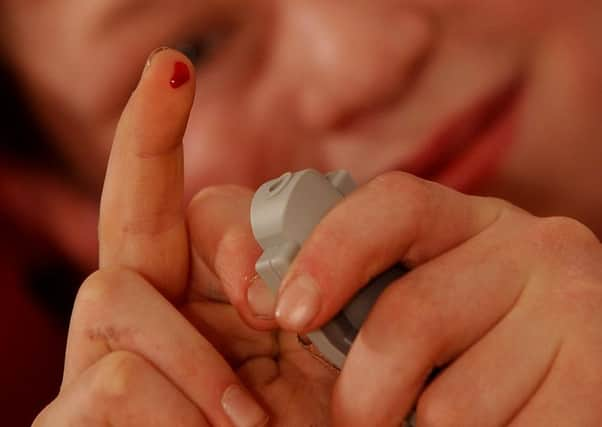Diabetes rates flatlining as Scots live longer with condition


Diabetes rates reached an all time high last year with 276,000 Scots registered with the condition.
Edinburgh University scientists said rising numbers were a “misconception” as the overall number of type 2 cases stabilised between 2004 and 2013 at around 4 in 1,000 people.
Advertisement
Hide AdAdvertisement
Hide AdDeath rates fell by 11.5 per cent for men and 15.7 per cent for women during this period, which scientists believe explains why increasing numbers of Scots are living with the condition.
The research also shed light on widening inequalities as the number of people diagnosed with the condition rose after 2010 among the most deprived, but fell for wealthier areas.
Type 2 diabetes occurs when the body does not produce enough insulin to regulate its blood sugar levels and can be caused by lifestyle factors such as obesity.
Experts say understanding these trends could help improve prevention and treatment for the condition, which remains a major public health concern in Scotland.
Treating avoidable complications for diabetes costs NHS Scotland £1 billion each year.
Lead author Dr Stephanie Read said: “There was this complete misconception that the number of new cases of type 2 diabetes are on the rise.
“In fact we knew that a lot of countries like Denmark and Sweden had seen a stabilisation of rates, so we wondered if there might be something similar here.
“One of the things that has obviously improved is treating people, as blood glucose is treated better and other risk factors for cardiovascular disease such as blood cholesterol and blood pressure as well. This seems to be having an impact.”
Advertisement
Hide AdAdvertisement
Hide AdThe gulf between the poorest communities and the wealthiest has widened, with patients in the most deprived areas more likely to develop type 2 diabetes, she said.
Dr Read added: “Tackling these inequalities will be crucial for improving treatment and management of the condition.”
Dr Emily Burns, of Diabetes UK, said: “This is why it’s important that we continue to work to prevent Type 2 diabetes from developing in the first place, and we know that maintaining a healthy weight through diet and exercise can greatly reduce a person’s risk.”